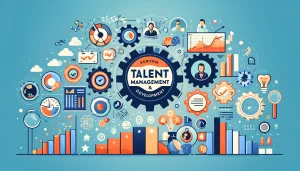A Human Resource Management System (HRMS) or Human Resource Information System (HRIS) is a software solution designed to streamline and automate various HR functions, processes, and tasks within an organization. Here are the key features and functionalities typically found in an HRMS or HRIS:
Employee Information Management:
Centralize storage of employee data, including personal details, contact information, employment history, qualifications, skills, and performance records.
Maintain employee profiles with access to relevant HR information and documents.
Recruitment and Applicant Tracking:
Manage the recruitment lifecycle from job posting and candidate sourcing to interviewing, selection, and onboarding.
Create job requisitions, post job openings to internal and external job boards, and track applicant profiles and resumes.
Automate applicant screening, scheduling, and communication processes.
Generate reports and analytics on recruitment metrics, such as time-to-hire, cost-per-hire, and applicant demographics.
Employee Self-Service (ESS):
Provide employees with self-service capabilities to access and update their personal information, benefits enrollment, leave requests, and training records.
Allow employees to view pay stubs, tax forms, and performance evaluations online.
Empower managers to approve requests and access relevant employee data for their team members.
Time and Attendance Management:
Track employee attendance, work hours, and leave balances.
Capture clock-in/out times using biometric scanners, time clocks, or web-based timesheets.
Automate time tracking, overtime calculations, and leave accruals.
Generate timesheet reports and export data to payroll systems for accurate payroll processing.
Payroll Processing:
Calculate and process employee salaries, wages, bonuses, and deductions accurately and on time.
Support various payment methods and frequencies, including direct deposit, checks, and electronic transfers.
Deduct taxes, benefits contributions, and other withholdings in compliance with legal requirements.
Generate payroll reports, tax filings, and year-end statements for employees and regulatory authorities.
Performance Management:
Set performance goals, objectives, and development plans for employees.
Conduct regular performance evaluations, feedback sessions, and performance reviews.
Track employee performance metrics, competencies, and achievements.
Identify training and development needs and opportunities for career growth.
Training and Development:
Manage training programs, courses, and certifications for employees.
Schedule and track employee participation in training sessions, workshops, and e-learning modules.
Monitor progress, completion rates, and skill development through training analytics.
Benefits Administration:
Administer employee benefits programs, including health insurance, retirement plans, and other fringe benefits.
Enroll employees in benefit plans, track eligibility, and manage open enrollment periods.
Provide employees with access to benefit information, plan options, and coverage details.
Compliance and Reporting:
Ensure compliance with labor laws, regulations, and industry standards.
Generate compliance reports, audit trails, and HR analytics to monitor adherence to policies and regulations.
Prepare and file regulatory reports, such as EEO-1, OSHA, and ACA filings.
Integration and Customization:
Integrate with other business systems and applications, such as payroll software, accounting systems, and timekeeping solutions.
Customize workflows, forms, and reports to align with specific HR processes and requirements.




